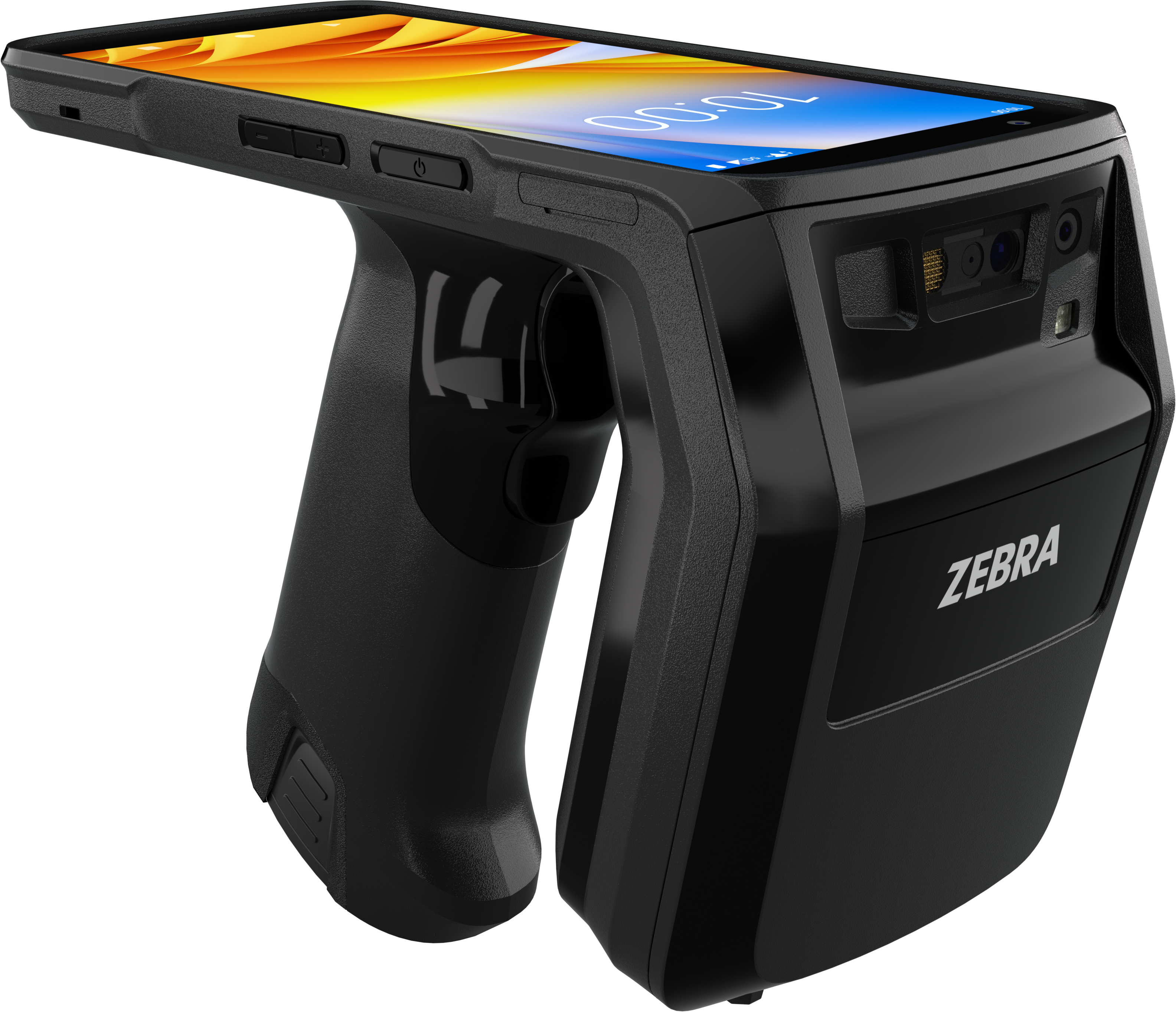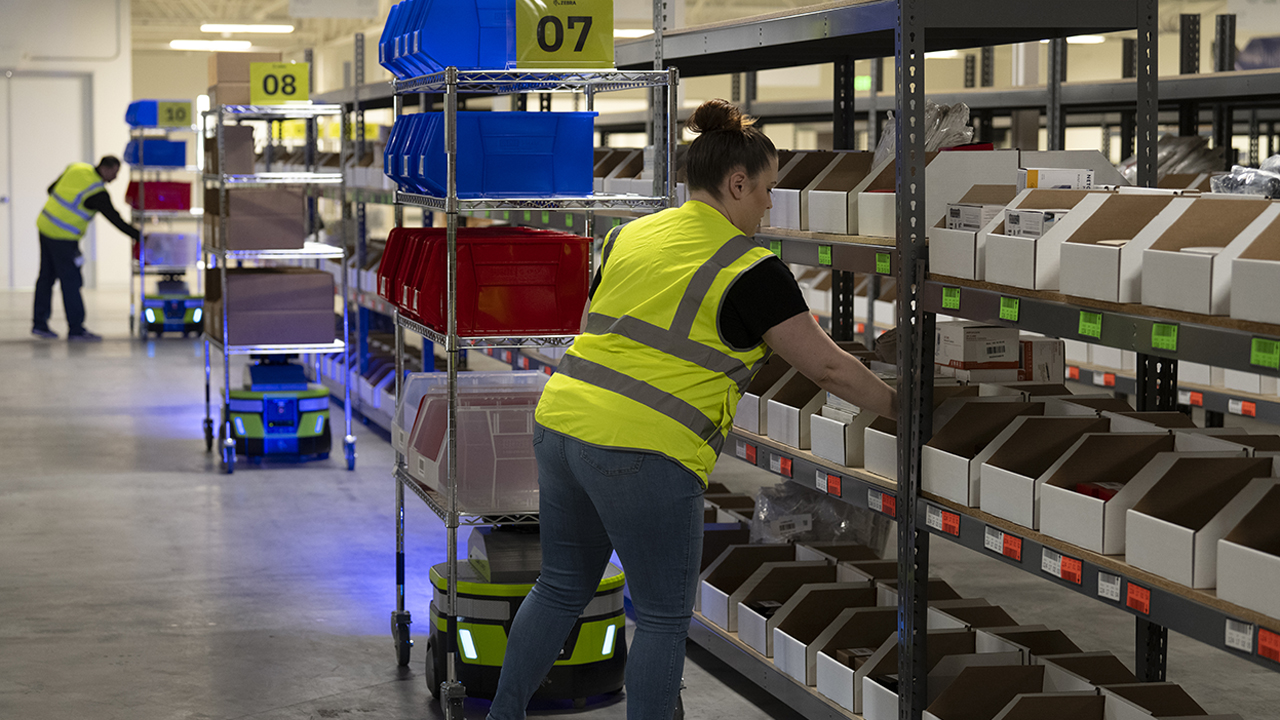Transform retail operations with Zebra’s retail technology solutions, featuring hardware and software for improving inventory management and empowering teams.
Streamline operations with Zebra’s healthcare technology solutions, featuring hardware and software to improve staff collaboration and optimise workflows.
Enhance processes with Zebra’s manufacturing technology solutions, featuring hardware and software for automation, data analysis, and factory connectivity.
Zebra’s transportation and logistics technology solutions feature hardware and software for enhancing route planning, visibility, and automating processes.
Zebra's public sector technology solutions enhance decision-making, streamline operations, and safeguard communities with advanced software and rugged hardware.
Zebra's hospitality technology solutions equip your hotel and restaurant staff to deliver superior customer and guest service through inventory tracking and more.
Zebra's market-leading solutions and products improve customer satisfaction with a lower cost per interaction by keeping service representatives connected with colleagues, customers, management and the tools they use to satisfy customers across the supply chain.
Empower your field workers with purpose-driven mobile technology solutions to help them capture and share critical data in any environment.
Zebra's range of mobile computers equip your workforce with the devices they need from handhelds and tablets to wearables and vehicle-mounted computers.
Zebra's desktop, mobile, industrial, and portable printers for barcode labels, receipts, RFID tags and cards give you smarter ways to track and manage assets.
Zebra's 1D and 2D corded and cordless barcode scanners anticipate any scanning challenge in a variety of environments, whether retail, healthcare, T&L or manufacturing.
Zebra's extensive range of RAIN RFID readers, antennas, and printers give you consistent and accurate tracking.
Choose Zebra's reliable barcode, RFID and card supplies carefully selected to ensure high performance, print quality, durability and readability.
Zebra's rugged tablets and 2-in-1 laptops are thin and lightweight, yet rugged to work wherever you do on familiar and easy-to-use Windows or Android OS.
With Zebra's family of fixed industrial scanners and machine vision technologies, you can tailor your solutions to your environment and applications.
Zebra’s line of kiosks can meet any self-service or digital signage need, from checking prices and stock on an in-aisle store kiosk to fully-featured kiosks that can be deployed on the wall, counter, desktop or floor in a retail store, hotel, airport check-in gate, physician’s office, local government office and more.
Adapt to market shifts, enhance worker productivity and secure long-term growth with AMRs. Deploy, redeploy and optimize autonomous mobile robots with ease.
Discover Zebra’s range of accessories from chargers, communication cables to cases to help you customise your mobile device for optimal efficiency.
Zebra's environmental sensors monitor temperature-sensitive products, offering data insights on environmental conditions across industry applications.
Zebra's location technologies provide real-time tracking for your organisation to better manage and optimise your critical assets and create more efficient workflows.
Enhance frontline operations with Zebra’s AI software solutions, which optimize workflows, streamline processes, and simplify tasks for improved business outcomes.
Empower your frontline with Zebra Companion AI, offering instant, tailored insights and support to streamline operations and enhance productivity.
The everything you need to rapidly and cost effectively develop high-performance AI vision applications on Zebra mobile computers.
Zebra Workcloud, enterprise software solutions boost efficiency, cut costs, improve inventory management, simplify communication and optimize resources.
Keep labour costs low, your talent happy and your organisation compliant. Create an agile operation that can navigate unexpected schedule changes and customer demand to drive sales, satisfy customers and improve your bottom line.
Drive successful enterprise collaboration with prioritized task notifications and improved communication capabilities for easier team collaboration.
Get full visibility of your inventory and automatically pinpoint leaks across all channels.
Reduce uncertainty when you anticipate market volatility. Predict, plan and stay agile to align inventory with shifting demand.
Drive down costs while driving up employee, security, and network performance with software designed to enhance Zebra's wireless infrastructure and mobile solutions.
Explore Zebra’s printer software to integrate, manage and monitor printers easily, maximising IT resources and minimising down time.
Make the most of every stage of your scanning journey from deployment to optimisation. Zebra's barcode scanner software lets you keep devices current and adapt them to your business needs for a stronger ROI across the full lifecycle.
RFID development, demonstration and production software and utilities help you build and manage your RFID deployments more efficiently.
RFID development, demonstration and production software and utilities help you build and manage your RFID deployments more efficiently.
Zebra DNA is the industry’s broadest suite of enterprise software that delivers an ideal experience for all during the entire lifetime of every Zebra device.
Advance your digital transformation and execute your strategic plans with the help of the right location and tracking technology.
Boost warehouse and manufacturing operations with Symmetry, an AMR software for fleet management of Autonomous Mobile Robots and streamlined automation workflows.
The Zebra Aurora suite of machine vision software enables users to solve their track-and-trace, vision inspection and industrial automation needs.
Zebra Aurora Focus brings a new level of simplicity to controlling enterprise-wide manufacturing and logistics automation solutions. With this powerful interface, it’s easy to set up, deploy and run Zebra’s Fixed Industrial Scanners and Machine Vision Smart Cameras, eliminating the need for different tools and reducing training and deployment time.
Aurora Imaging Library™, formerly Matrox Imaging Library, machine-vision software development kit (SDK) has a deep collection of tools for image capture, processing, analysis, annotation, display, and archiving. Code-level customisation starts here.
Aurora Design Assistant™, formerly Matrox Design Assistant, integrated development environment (IDE) is a flowchart-based platform for building machine vision applications, with templates to speed up development and bring solutions online quicker.
Designed for experienced programmers proficient in vision applications, Aurora Vision Library provides the same sophisticated functionality as our Aurora Vision Studio software but presented in programming language.
Aurora Vision Studio, an image processing software for machine & computer vision engineers, allows quick creation, integration & monitoring of powerful OEM vision applications.
Adding innovative tech is critical to your success, but it can be complex and disruptive. Professional Services help you accelerate adoption, and maximise productivity without affecting your workflows, business processes and finances.
Zebra's Managed Service delivers worry-free device management to ensure ultimate uptime for your Zebra Mobile Computers and Printers via dedicated experts.
Find ways you can contact Zebra Technologies’ Support, including Email and Chat, ask a technical question or initiate a Repair Request.
Zebra's Circular Economy Program helps you manage today’s challenges and plan for tomorrow with smart solutions that are good for your budget and the environment.
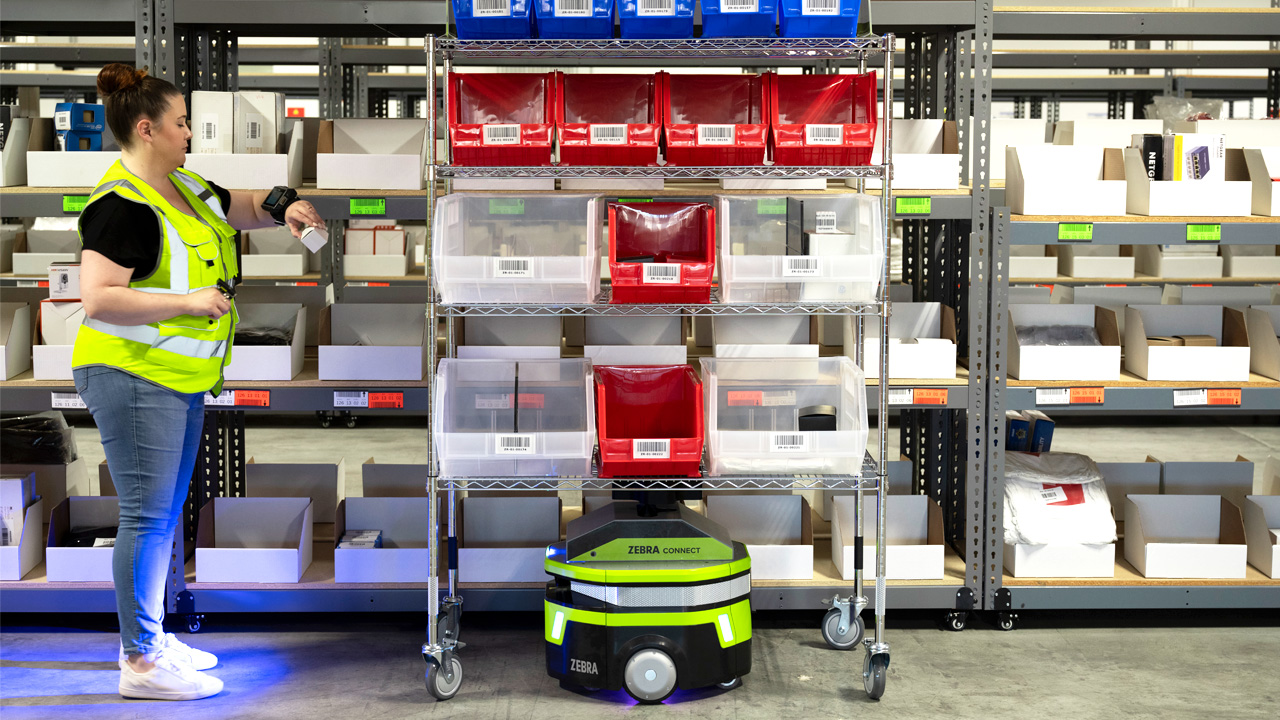
Optimize Every Second of Every Fulfillment Workflow with Up to 30% Fewer Robots
The scarcity of labor resources and high costs of robotics ownership are pushing fulfillment companies to rethink their automation strategies. Zebra addressed these challenges head on in a recent Making the Case report published in collaboration with Modern Materials Handling.
This report delves into the top challenges fulfillment operations are dealing with on the robotics front today. It reveals how a collaborative approach to autonomous mobile robots (AMRs) can help you overcome automation hurdles, operate more efficiently, and enhance overall performance and profitability.
Legacy Systems Weren’t Designed to Optimize Your Profits
Traditional AMR fulfillment methodologies are caught in a cycle of inefficiency that undermines your return on investment (ROI). Robots frequently remain idle in these systems, whether they’re waiting for work to be inducted, standing by in aisles for pickers to locate them, or parked at drop-off points queued for work to be removed. Workers can also be held back by slow-moving robots that limit their productivity. The financial impacts can be substantial when you multiply these challenges across dozens of robots and multiple facilities.
To make matters worse, person-to-goods (P2G) pick solution designs have been largely stagnant for more than a decade. They’re also getting more expensive, effectively driving up the total cost of ownership (TCO). Today’s fulfillment operations leaders are looking for automation investments that deliver real cash flow improvements.
Optimizing AMR Utilization for Peak Performance
AMRs can only go so fast, so they must optimally perform to achieve the desired ROI. Most of the waste — and as a result, cost of legacy AMR solutions — happens when robots are waiting for operators, and operators are engaged in undirected work.
The answer, therefore, isn’t to add more robots or hire additional workers but to make both more efficient. The good news is there’s a way to start getting more benefit from every robotics investment, and quickly.
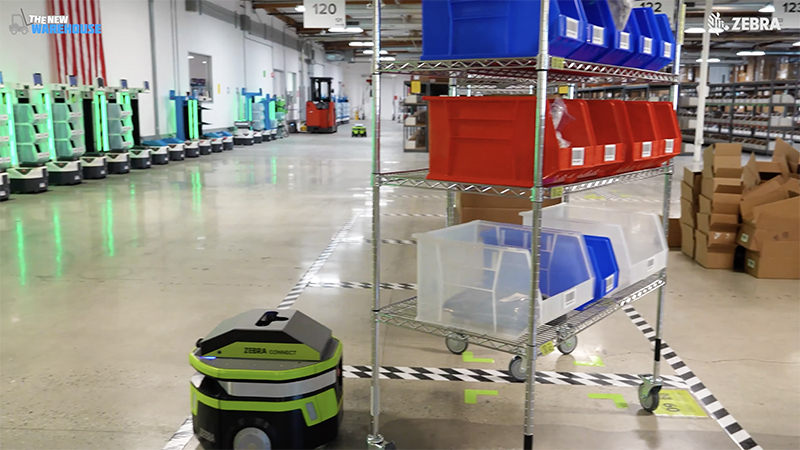
Transforming Fulfillment Operations Overnight
With Zebra Symmetry™ Fulfillment and the Team Intelligence picking methodology, employees use wearables that direct them on precise, optimized paths. Teams of AMRs move detachable carts in a “leapfrog” pattern to ideal locations ahead of human workers, allowing more items to be picked in less time.
In this environment, workers and robots always have orchestrated work assignments, which means there’s never a robot without a picker or vice versa.
Developed to help companies realize the full potential of AMR-assisted picking, the solution uses a three-pronged approach to help workers pick more items in less time while reducing robot fleet sizes:
1. Utilization balance: Accumulation is achieved more cost effectively by buffering with inexpensive carts, instead of additional robots or labor.
2. Greater cubic capacity: Detachable carts eliminate AMR wait times and boost pick density, reducing your robot count by up to 30% compared to AMR solutions with integrated payloads, while handling 150 to 300% more capacity.
3. Optimized pick paths: Workers and robots always have orchestrated work assignments. Employees receive precise instructions on what and where to pick, accelerating the entire operation.
Additionally, warehouse managers gain real-time visibility into all activities, enhancing operational oversight.
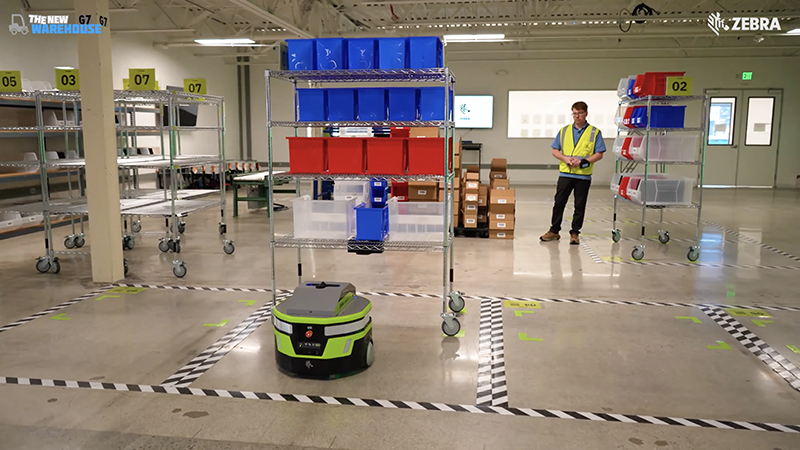
Discover How You Can Get More From Your Robotics Investment
By combining a collaborative fulfillment approach with an advanced picking methodology, Zebra Symmetry Fulfillment helps robots and pickers work more efficiently and effectively.
Our recent report includes a simulation demonstrating how a real-world fulfillment operation reduced its automation costs by 30% with no loss of daily order volume productivity, resulting in six-figure savings annually. It also highlights specific benefits the solution can deliver to VPs of operations, solution engineering or continuous improvement as well as CFOs.
To learn more about how this seamlessly integrated fulfillment workflow translates into operational costs, fewer errors, reduced waste, optimized resource utilization and a healthier bottom line, download the full report: Making the Case for Collaborative, Highly Efficient Fulfillment Solutions.
Zebra Developer Blog
Zebra Developer BlogZebra Developer Blog
Are you a Zebra Developer? Find more technical discussions on our Developer Portal blog.
Zebra Story Hub
Zebra Story HubZebra Story Hub
Looking for more expert insights? Visit the Zebra Story Hub for more interviews, news, and industry trend analysis.
Search the Blog
Search the BlogSearch the Blog
Use the below link to search all of our blog posts.
Most Recent
Legal Terms of Use Privacy Policy Supply Chain Transparency
ZEBRA and the stylized Zebra head are trademarks of Zebra Technologies Corp., registered in many jurisdictions worldwide. All other trademarks are the property of their respective owners. ©2025 Zebra Technologies Corp. and/or its affiliates.



